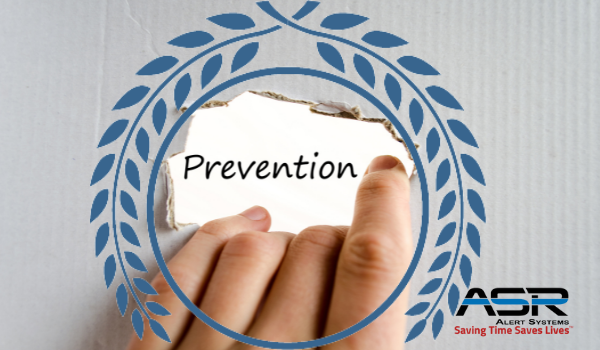
Course Review FEMA IS904 Active Shooter Prevention
JUPITER, FL / AGILITYPR.NEWS / January 13, 2022 / Here at ASR, we take critical incident response very seriously. We specialize in the field of alert notifications to Law Enforcement and First Responders in the event of an active shooter or other crisis. Our mission is to save lives when these tragedies strike, but in reality, we would rather they never happen in the first place.
ASR Alert Systems spends a great deal of time working to educate the public. Not just about active shooter protocols when events happen, but also proactive education that aims to teach people about the things they can do to prevent violence. In this same vein, we would like to highlight and discuss a FEMA course that is available to the general public.

The History of FEMA Training
FEMA's Emergency Management Institute (EMI) just celebrated its 70th year. FEMA EMI traces its heritage from the former National Civil Defense Staff College (CDSC) that was developed and conducted in response to the cold war. To facilitate meeting this national threat, the federal government opened the training facility and rescue school in Olney, Maryland in 1951. April 1, 1951, marked the stand-up of the Staff College. The first course was titled – Civil Defense Administration.
Due to concerns during the Cold War, a Presidential Order moved the Federal Civil Defense Administration (FCDA) and the Civil Defense Staff College (CDSC) to Battle Creek, Michigan, in response to the increasing threat of attack on Washington, DC. CDSC continued teaching courses in program administration and finance, civil defense operations, and radiological monitoring among others, to state and local personnel. By
1979, some new courses had been created on natural disaster operations, and the FCDA was aligned under the Department of Defense and had since been renamed the Defense Civil Preparedness Agency (DCPA).

By 1970, emergency and disaster activities across the nation were still fragmented. Many parallel programs and policies existed at the state and local levels, simplifying the complexity of federal disaster relief efforts. The National Governor’s Association sought to decrease the many agencies with which state and local governments were forced to work. In the late 1970s, they asked President Carter to centralize federal emergency functions.
President Carter signed Executive Order 12127, effective April 1, 1979, establishing the Federal Emergency Management Agency (FEMA). Shortly after, in signing Executive Order 12148 on July 20, 1979, President Carter gave the agency the dual mission of emergency management and civil defense. These combined orders brought together a number of Federal agencies that had involvement in disasters to form the new organization known as FEMA. Also in 1979, President Carter dedicated the former St. Joseph’s College in Emmitsburg, Maryland, as the FEMA National Emergency Training Center (NETC). NETC then became the home for the National Fire Academy (NFA) and the renamed Staff College, which became the Emergency Management Institute (EMI), to reflect its now broader training role. The move from Battle Creek, Michigan, to Emmitsburg was completed in the fall of 1980, and the first EMI class was conducted in January 1981.
Today. the EMI is committed to its mission in preparing the nation, to make ready our nation's emergency management workforce and the whole community for disasters. EMI continues to innovate how they deliver the important, essential training and education to further build the profession. One such training of particular value to the general public is FEMA IS904.

FEMA IS904 Active Shooter Prevention: You Can Make A Difference
We all play a critical role and the choices we make will have lasting ramifications on us and those around us. IS904 focuses on the actions everyone can take to help reduce the likelihood of an active shooter incident in the workplace. While there is no way to prevent these incidents 100% of the time, we can reduce the likelihood of an incident and prevent some incidents from occurring, thereby saving lives. During the course, FEMA shares tools and perspectives anyone may use to reduce the likelihood of an active shooter incident.
Per FEMA, the course objectives are:
- Recognize indicators that someone is on a pathway to violence, including the role that stressors play and the importance of addressing concerning behaviors.
- Identify potential concerning behaviors, how to recognize them, and when to take appropriate action.
- Identify common pre-attack indicators demonstrated by active shooters and how to recognize them.
- Identify empathy and compassion techniques to reduce the likelihood an event will escalate into an active shooter incident.
- Identify situations where professional help could be used to prevent an incident from escalating into a violent situation.
- Identify traits of a connected and supportive work environment.
- Recognize the characteristics of productive conflict and destructive conflict.
ASR employees have taken IS904 and readily agree that the training is of great benefit to the general public. We found it especially important that the course identifies the right time to intervene and what those interventions might look like.
RELATED: 1 in 7 Employees Do Not Feel Safe at Work
Of special note:
- Did you know that 56% of the active shooters studied had leaked (in various ways) their intent to commit violence prior to the attack? More shockingly not a single bystander reported the leaked intent to law enforcement prior to the attack. The IS904 training will hopefully help to educate the public in ways that will course-correct this disturbing statistic.
- Did you know that 79% of active shooters appeared to be acting due to a grievance of some kind? And, in 90% of those cases, the grievance was personal in nature and had nothing to do with global issues and ideologies. In other words, the attacker felt personally wronged in some way which suggests that support FOR the shooter prior to the act of violence is an effective and vitally important step being missed, especially when many are signaling a need for help.
- Did you know that the 2nd most prevalent indicator for an active shooter was the appearance that the shooter struggled with mental health issues, mostly undiagnosed? To put it another way. People don't have to be diagnosed with a mental health disorder to display signs of mental health challenges. Many times, it is obvious to bystanders that something is "off" about the would-be attacker's actions and behaviors.
RELATED: New Workplace Violence Prevention Regulations
There is so much we can learn and plenty we can do to stop active shooter events. While many people struggle with "interfering" in other people's business, the truth is that most times the shooters are displaying signs that trouble is on the horizon. See something, say something is a real intervention strategy that most people simply disregard due to feelings of discomfort about the situation or not wanting to get involved. In hindsight of nearly every shooting, reports emerge from "witnesses" or "associates" indicating that they knew something was wrong or different about the attacker's general behavior prior to the attack. While no one is suggesting that we overreact to the behaviors of others, it is important to consider how we might intervene when we see patterns of behavior and red flags. It is also important that we remove the stigma of being a "snitch" when someone leaks their intentions for violence. We will never know how many prior shootings could have been avoided, but we can do our best to better respond today to help people find a better path that does not involve a mass-casualty event if we see concerning signs.
To take the FEMA IS904 course yourself, you will need a FEMA Student Identification Number. Obtaining a FEMA student ID is free, you can register for yours HERE.
You can download a printable version of the FEMA IS904 course HERE.
To take the FEMA IS904 Course, CLICK HERE. Upon completion and a minimum passing score of 75%, a completion certificate will be emailed to you. The course takes about 1 hour.
Have questions or wish to schedule a virtual demonstration of the ASR Threat Alert System? Please Contact Us below.
About Us
ASR Alert Systems is a patented state-of-the-art critical incident response technology specializing in the field of alert notifications to Law Enforcement and First Responders in the event of an active shooter or other crisis. Our technology can be customized to any industry, building, or event. We deliver customer-specific technology unmatched by anyone.
Contacts

Shay Discepolo
Marketing
shay@asralertsystems.comJupiter, FL
Phone: 800-722-7601
https://www.asralertsystems.com/blog/course-review-fema-is904-active-shooter-prevention